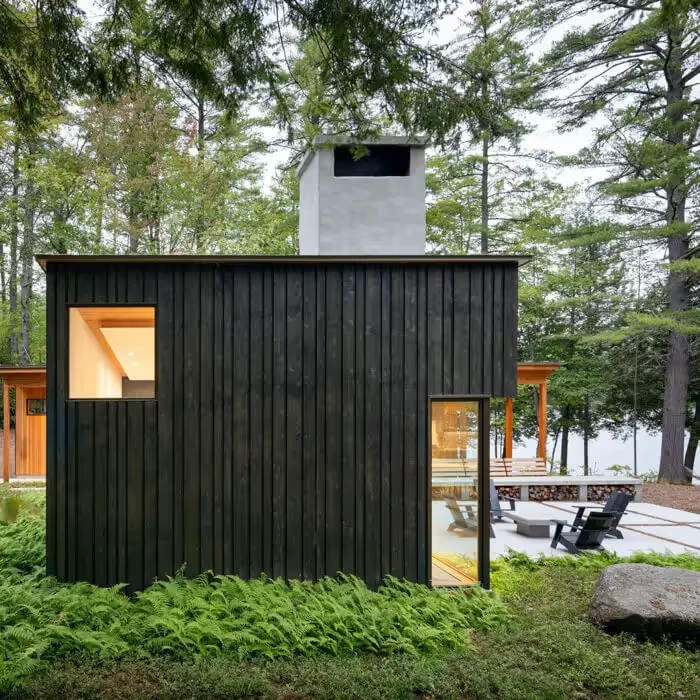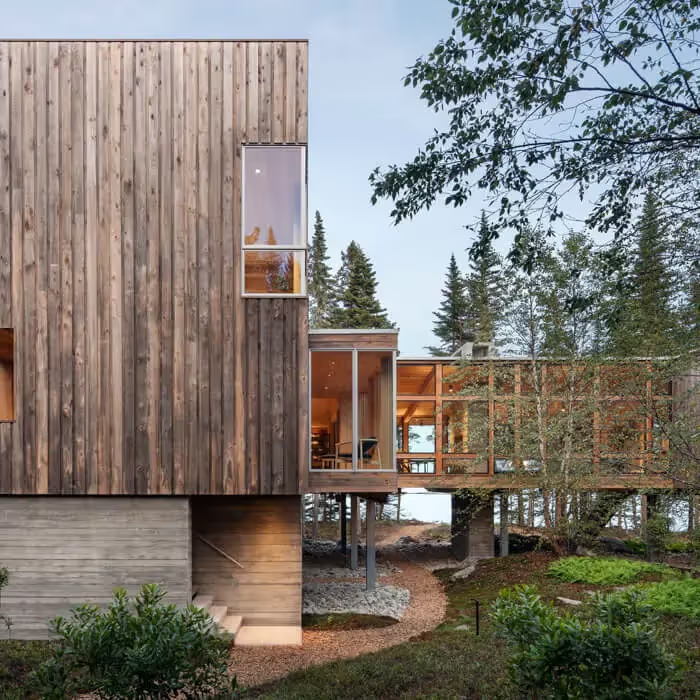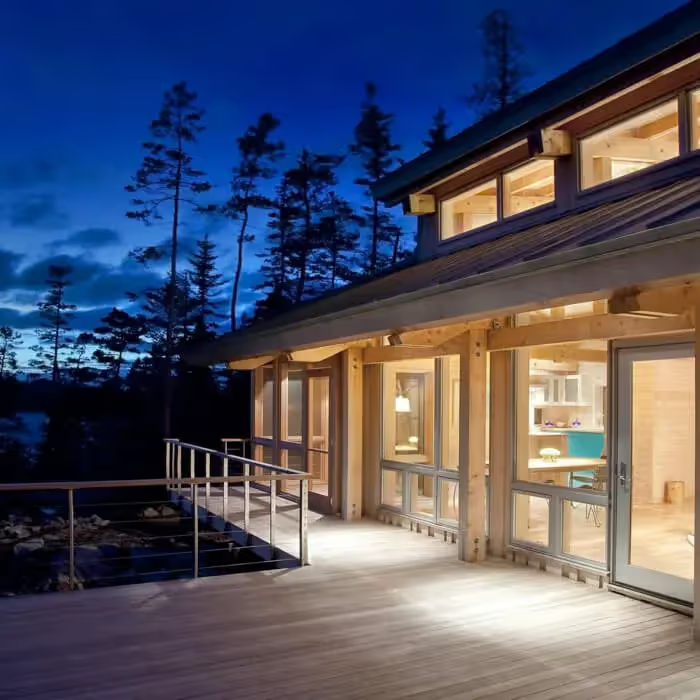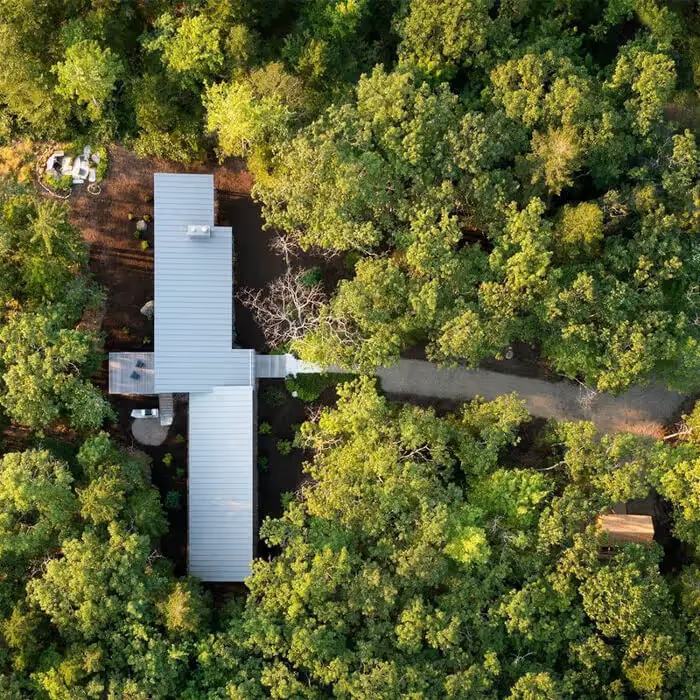The Overlook


Carrabassett Valley in western Maine is known for its natural beauty and outdoor recreational opportunities, particularly during the winter months. The area’s Sugarloaf Mountain Resort is one of the most sought-after ski destinations on the East Coast.
Our clients, avid outdoor enthusiasts from Boston with deep ties to Maine, embarked on a unique project to build a ski home that would give them year-round access to the outdoors. Their site, positioned atop a mountain, features a scenic overlook with mountain views and a popular trail system. As active members of the local community, our clients made special efforts to maintain open access to ensure that the overlook and trail access remained unobstructed.
As with all our projects, our design involved a dialogue with the site. Our approach needed to reinforce the connection between inhabitants and the landscape, without disrupting the natural features of the site.
Amidst the sea of vegetation, natural "islands" in the form of rocky outcrops provide clearings and wayfinding. We carefully explored site positioning, considering several options where the house could rest. The goal was to create an outpost that balances protection from the elements and affords stunning 360-degree views. One of these vantage points offers a view over the town below. These natural clearings and rock formations guided our design, and we sited the house harmoniously between these distinctive features.
Rather than disturbing the property's natural features, the house was situated adjacent to them, turning them into destinations. This approach transforms the house itself into a unique addition to the landscape.The strategic building placement straddles multiple scenic vistas encompassing a long southwest panorama, Sugarloaf Mountain to the northwest, and an eastern exposure for morning sun.
The concept of prospect and refuge was a guiding principle–creating places where inhabitants feel both protected and connected to the surrounding beauty. Our design concept revolved around a single elongated structure optimized for capturing sunlight and also accommodating passage through the home. A large gable form emerged as a response to the requirement of diverting snow away from entry points. The gable design efficiently sheds snow to the east and west away from visitor arrival.
The exterior materials were carefully chosen for aesthetics and durability while also echoing local New England tradition. Eastern white cedar shingles, a standing seam metal roof, and Western red cedar board siding was used to withstand the mountain's harsh conditions. The integration of a durable board-formed concrete base roots the structure to the site. The home's exterior envelope design is informed by the latest building science and tradition. A rain screen system, robust continuous insulation, and remarkable airtightness ensures the building's longevity for years to come.
Inside, the house is a cozy yet functional space, with carefully planned areas for activities. A gear storage room caters to the family's active lifestyle, offering organized space for various equipment. A sauna, following the Scandinavian tradition, provides a space for relaxation and self-care, set across from the porte cochere.
The interior design by Heidi Lachapelle Interiors complements both the architecture and the site. The stone that was extracted from the site for the foundation ended up setting the tone for the entire home--from the fireplace hearth down to the fabric schemes.
Internally, the architecture continues to narrate the story of the landscape. Local Eastern white pine clads the floors, walls, and ceilings and will age gracefully and connect with the landscape and region.
This home would not have been possible without the relationship formed with local builder Sebastian Tooker and his team of craftspeople. Carefully executed millwork by the team provides a sense of protection on the north side while opening up to the views in the south. The central staircase strategically divides public and private spaces built from reclaimed elm and serves as a core feature, branching out to various parts of the house.
The open collaboration between client, design team, and builder were integral to the success of the project and allowed the design process to evolve. As a result, the home is a reflection of the clients’ vision, the relationships formed, and this unique site.
Project Completion Date: 2023
Photography:
Collaborators:
-Builder: Sebastian Tooker Construction
-Interior Designer: Heidi Lachapelle Interiors
-Structural Engineer: Albert Putnam Associates
-Kitchen Millwork: Sebastian Tooker Construction
-Landscape Architecture: Soren Deniord Design Studio
Related Press:
Awards:
2024 AIA Maine Honor Award for Excellence in Architecture
2024 Residential Design Award for Architectural Interiors by Residential Design magazine




